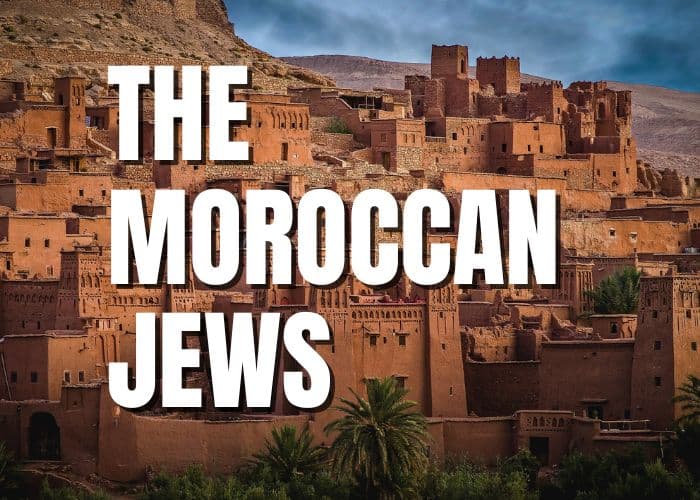Moroccan Jews: A Rich and Diverse History
Morocco has been home to a vibrant Jewish community for centuries, with a rich history, culture, and traditions that continue to thrive to this day. This article will explore the history of Moroccan Jews, their communities today, culture (including music and cuisine), religious liturgy, and notable people and accomplishments.
History
Moroccan Jews have a long and complex history, with evidence of Jewish presence in the region dating back to at least the 3rd century BCE. Over time, Jewish communities flourished throughout Morocco, with some of the most prominent located in Fez, Marrakesh, and Essaouira.
Throughout the centuries, Moroccan Jews faced various challenges, including forced conversions, persecution, and discrimination. However, they managed to maintain their traditions and cultural practices despite these difficulties.
One of the most significant events in the history of Moroccan Jews was the mass exodus in the mid-20th century. As Morocco gained its independence from France in 1956, many Jews chose to emigrate to Israel, Europe, or the United States due to economic hardships and political instability.
Communities Today
While the Moroccan Jewish population has declined significantly over the years, there are still thriving Jewish communities in the country. Today, most of Morocco’s Jewish population is concentrated in the cities of Casablanca and Marrakesh, with smaller communities in other cities such as Fez, Tangier, and Essaouira.
These communities continue to practice traditional customs and rituals, including observing Shabbat and celebrating Jewish holidays such as Passover and Rosh Hashanah. The synagogues and Jewish cemeteries in these cities are also important cultural and historical landmarks.
Culture
Moroccan Jewish culture is rich and diverse, influenced by a range of factors including Arab, Berber, and Sephardic Jewish traditions. Music and cuisine are two of the most notable aspects of Moroccan Jewish culture.
Moroccan Jewish music is a unique blend of Jewish and Moroccan influences. The most famous Moroccan Jewish musician is Samy Elmaghribi, who was born in Marrakesh in 1922 and is considered the “king of Moroccan Jewish music.” Other notable Moroccan Jewish musicians include Maurice El Medioni and Emil Zrihan.
Moroccan Jewish cuisine is known for its diverse flavors and spices, reflecting the country’s location at the crossroads of Europe, Africa, and the Middle East. Popular dishes include tagine, a slow-cooked stew made with meat or vegetables, and harira, a soup made with tomatoes, lentils, and chickpeas.
Religious Liturgy
Moroccan Jewish religious liturgy is also an essential aspect of their culture. The liturgy is a blend of Hebrew and Arabic, reflecting the influence of both Sephardic and Arab traditions. The Moroccan Jewish liturgy is known for its unique melodies and prayers, which have been passed down through generations.
One of the most significant Moroccan Jewish religious events is the annual pilgrimage to the tomb of Rabbi Amram ben Diwan in the city of Ouezzane. Thousands of Jews from Morocco and around the world gather each year to celebrate this event.
Notable People and Accomplishments
Moroccan Jews have made significant contributions to a wide range of fields, including politics, arts, science, and literature. Here are just a few examples:
- André Azoulay: A prominent Moroccan Jewish businessman and advisor to King Mohammed VI of Morocco. Azoulay has been an advocate for Jewish-Muslim dialogue and has worked to promote economic development in the country.
- David Amar: A Moroccan Jewish politician who served as the Minister of Foreign Affairs and the Minister of Justice in the 1950s and 1960s. Amar was one of the architects of Morocco’s independence from France and was known for his advocacy for the rights of Moroccan Jews. In 1959, Amar was appointed as the first Jewish Minister of Finance in an Arab country.
- Gad Elmaleh: A comedian and actor who is considered one of the most successful French comedians of all time. Born in Casablanca in 1971, Elmaleh moved to Paris at the age of 19 to pursue his career in comedy. He has since performed in numerous one-man shows and films, and has won several awards for his work.
Moroccan Jews have also made significant contributions to music. The traditional music of Morocco, which is heavily influenced by Arabic, Andalusian, and Berber cultures, has a distinct Jewish component. The piyyutim, or religious songs, of Moroccan Jews are an important part of the country’s musical heritage. The most famous Moroccan Jewish singer is Raymonde El Bidaouia, who was known for her powerful voice and her ability to blend traditional Arabic and Jewish music. Other notable Moroccan Jewish musicians include Maurice El Medioni, a pianist who has been described as the “King of Andalusian-Jewish music,” and Emil Zrihan, a singer and cantor who is known for his renditions of piyyutim.
Moroccan Jewish cuisine is another important aspect of the country’s culture. Moroccan cuisine is known for its use of spices, and Moroccan Jewish cuisine is no exception. Some of the most popular Moroccan Jewish dishes include tagine, a stew made with meat or fish and vegetables, and pastilla, a sweet and savory pie made with layers of phyllo dough, chicken, almonds, and cinnamon.
Finally, Moroccan Jews have also made significant contributions to the field of religious liturgy. The piyyutim of Moroccan Jews are known for their intricate melodies and complex rhythms, and are an important part of the country’s cultural heritage. Moroccan Jews have also developed their own unique style of liturgical music, which incorporates elements of Arabic, Andalusian, and Berber music.
In conclusion, Moroccan Jews have a rich history and culture that is deeply intertwined with the country of Morocco. From their early days in the country to the present, Moroccan Jews have played an important role in the country’s political, cultural, and economic development. Today, Moroccan Jews continue to contribute to the country in a wide range of fields, and their legacy serves as a testament to the enduring power of diversity and tolerance.








Ohr HaChaim Yomi – Emor